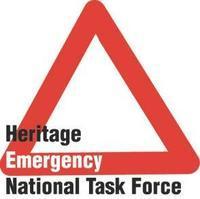-
Membership
Membership
Anyone with an interest in the history of the built environment is welcome to join the Society of Architectural Historians -
Conferences
Conferences
SAH Annual International Conferences bring members together for scholarly exchange and networking -
Publications
Publications
Through print and digital publications, SAH documents the history of the built environment and disseminates scholarship -
Programs
Programs
SAH promotes meaningful engagement with the history of the built environment through its programsMember Programs
-
Jobs & Opportunities
Jobs & Opportunities
SAH provides resources, fellowships, and grants to help further your career and professional life -
Support
Support
We invite you to support the educational mission of SAH by making a gift, becoming a member, or volunteering -
About
About
SAH promotes the study, interpretation, and conservation of the built environment worldwide for the benefit of all
Disaster Resources from the Heritage Emergency National Task Force
Sep 10, 2018
by
SAH News
 FEMA and the Smithsonian Institution co-sponsor the Heritage Emergency National Task Force (HENTF), a partnership of 58 national service organizations and federal agencies created to protect cultural heritage from the damaging effects of natural disasters and other emergencies. Below you’ll find HENTF resources for dealing with wildfires and preparing for hurricane season.
FEMA and the Smithsonian Institution co-sponsor the Heritage Emergency National Task Force (HENTF), a partnership of 58 national service organizations and federal agencies created to protect cultural heritage from the damaging effects of natural disasters and other emergencies. Below you’ll find HENTF resources for dealing with wildfires and preparing for hurricane season.
Wildfires
The California wildfires have been devastating, destroying homes and upending lives. For homeowners who are returning to damaged homes to literally pick up the pieces of their lives, HENTF’s “After the Fire” fact sheet provides helpful advice and guidance.
Dealing with ash and fire debris is dangerous. A sampling of health and safety resources from California state agencies can be found on HENTF’s Current Disasters web page.
Hurricanes
When you receive notice of a hurricane that has the potential to impact your area, it’s important that all individuals and cultural institutions prepare for possible strong winds, heavy rain, and flooding:
- Track the storm via the National Hurricane Center, http://www.nhc.noaa.gov/.
- Monitor information via your State Emergency Management Agency. For links to public safety websites for states, territories, and the District of Columbia, see https://www.dhs.gov/state-homeland-security-and-emergency-services.
- Gather your staff and review your disaster plan today. No disaster plan? Put that at the top of the to-do list once the hurricane passes (and hope you didn’t need it this time).
- If you have a disaster plan, make sure everyone has a printed copy to take home. An electronic version may be useless if you lose power.
- Make sure staff, volunteer, and board contact lists are up to date. Determine how you will communicate with one another before, during, and after the storm.
- Make sure your insurance and disaster recovery vendor contact information is readily available.
- If you don’t already have up-to-date images (photographic/video) of your facility’s exterior and interior, including storage areas, now’s the time to take them. Being able to illustrate how your building and collections looked before damage will be helpful if the need arises to pursue recovery financing.
- Back up electronic records and store the back-ups off-site or in the cloud.
- Secure outdoor furniture, bike racks, book drops, etc. – anything that can become a projectile in strong winds.
- Move collections that are in areas vulnerable to flooding – i.e., the floor, the basement – or susceptible to rain – near windows or under roofs.
- If you have time, cut lengths of plastic sheeting to be able to throw them over shelves or equipment should the building envelope be compromised.
- Know the location and shut-off procedures for water, electricity, and gas.
- Review individual or family plans. You’ll feel better attending to your organization knowing that your loved ones are safe.
- For tips on what to do before, during, and after a hurricane, go to https://www.ready.gov/hurricanes.
- Keep this 24/7 hotline number handy: 202.661.8068. The National Heritage Responders, a team of trained conservators and collections care professionals, are available 24/7 to provide advice.
- Download FEMA’s “After the Flood: Advice for Salvaging Damaged Family Treasures” fact sheet, with tips and resources for individuals and institutions, https://www.fema.gov/media-library/assets/documents/113297.
- Familiarize yourself with the disaster declaration process in case one is declared for your state, https://www.fema.gov/disaster-declaration-process.
Other Resources


